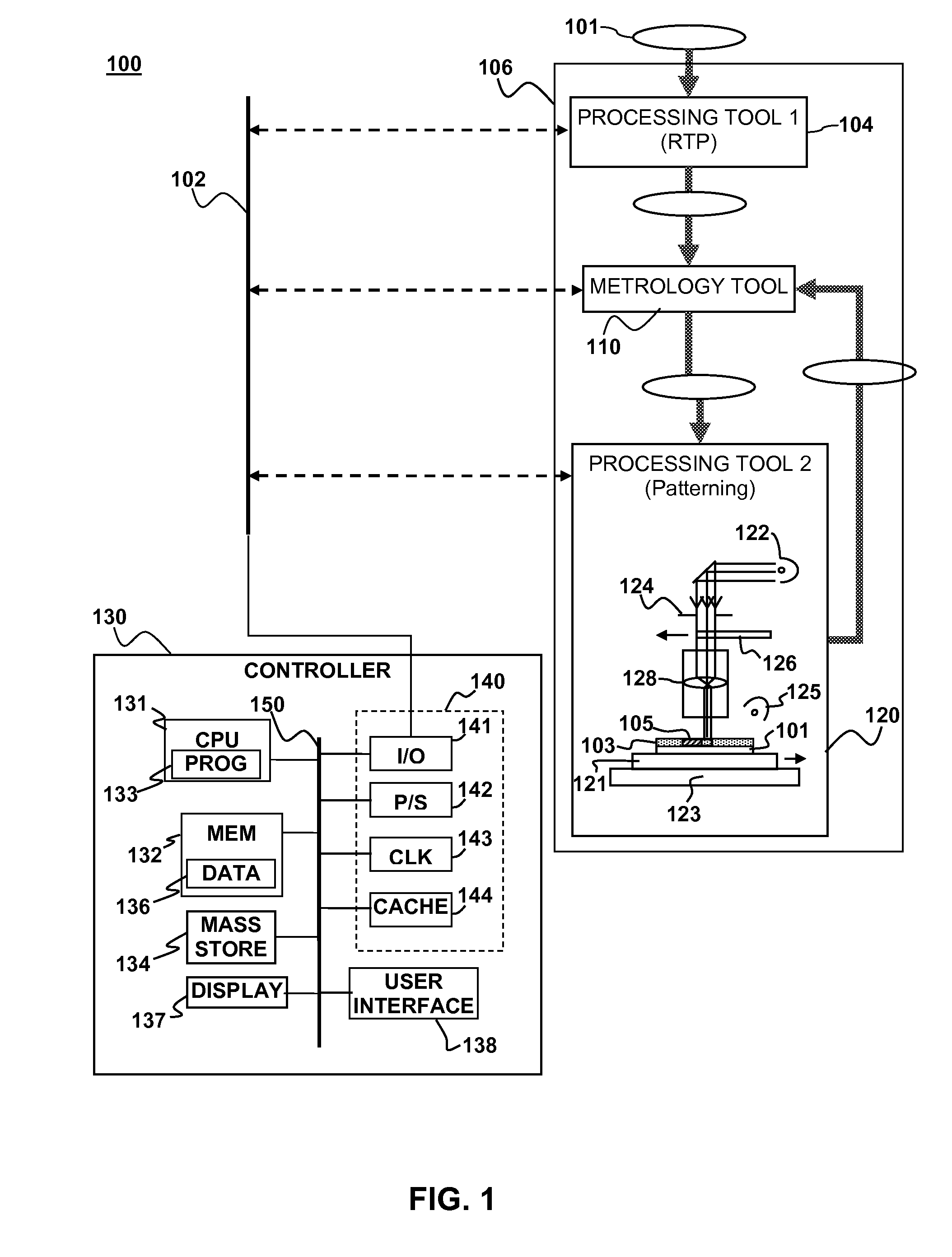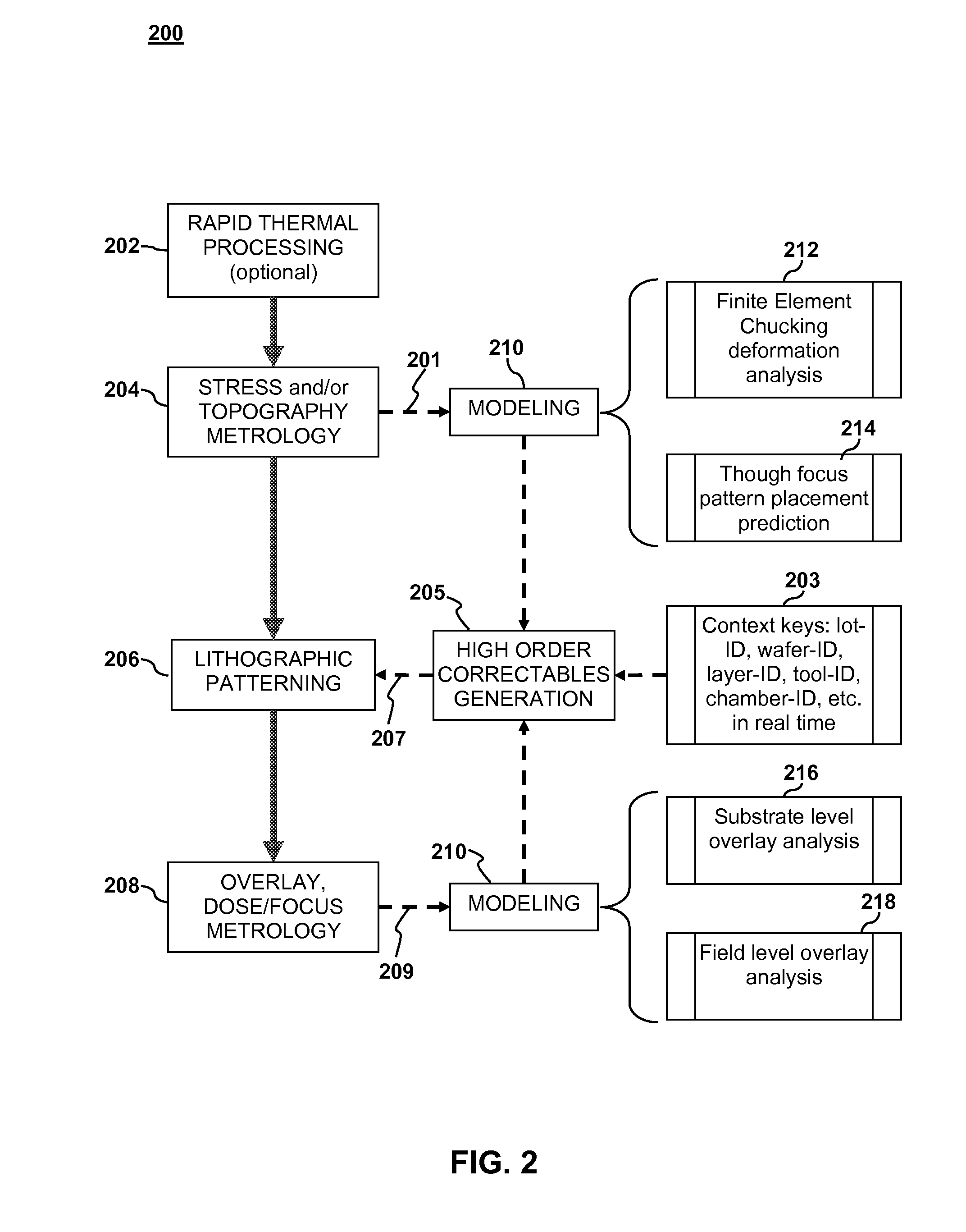Feedforward/feedback litho process control of stress and overlay
a lithographic process and stress technology, applied in the field of substrate processing, can solve the problems of poor sensitivity and signal-to-noise ratio, poor method convenience in production environment, complex apparatus for raman spectroscopy, etc., and achieve the effects of reducing patterning errors, high precision, and improving yield
- Summary
- Abstract
- Description
- Claims
- Application Information
AI Technical Summary
Benefits of technology
Problems solved by technology
Method used
Image
Examples
Embodiment Construction
[0023]Although the following detailed description contains many specific details for the purposes of illustration, anyone of ordinary skill in the art will appreciate that many variations and alterations to the following details are within the scope of the invention. Accordingly, the exemplary embodiments of the invention described below are set forth without any loss of generality to, and without imposing limitations upon, the claimed invention.
[0024]Embodiments of the present invention include a method and apparatus for process control in a lithographic process are described. Metrology may be performed on a substrate either before or after performing a lithographic patterning process on the substrate. One or more correctables to the lithographic patterning process may be generated based on the metrology. The lithographic patterning process performed on the substrate (or a subsequent substrate) may be adjusted with the correctables.
[0025]Embodiments of the present invention utilize...
PUM
 Login to View More
Login to View More Abstract
Description
Claims
Application Information
 Login to View More
Login to View More - R&D
- Intellectual Property
- Life Sciences
- Materials
- Tech Scout
- Unparalleled Data Quality
- Higher Quality Content
- 60% Fewer Hallucinations
Browse by: Latest US Patents, China's latest patents, Technical Efficacy Thesaurus, Application Domain, Technology Topic, Popular Technical Reports.
© 2025 PatSnap. All rights reserved.Legal|Privacy policy|Modern Slavery Act Transparency Statement|Sitemap|About US| Contact US: help@patsnap.com



